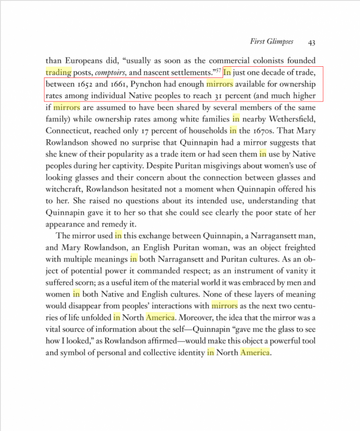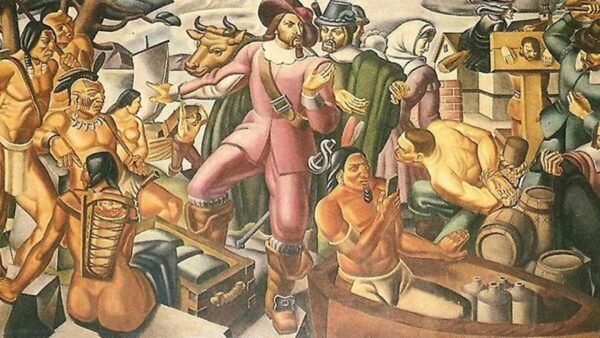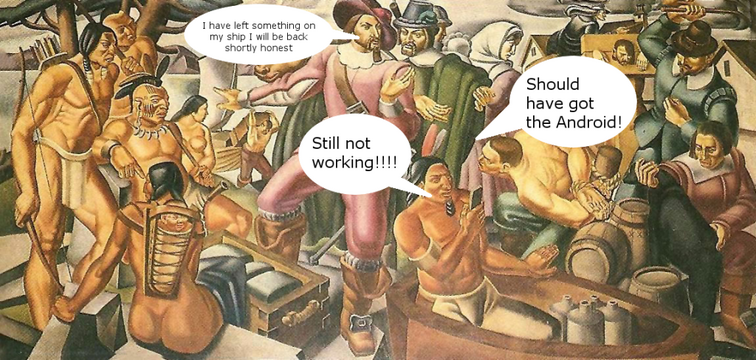-
NEW! LOWEST RATES EVER -- SUPPORT THE SHOW AND ENJOY THE VERY BEST PREMIUM PARACAST EXPERIENCE! Welcome to The Paracast+, 11 years young! For a low subscription fee, you can download the ad-free version of The Paracast and the exclusive, member-only, After The Paracast bonus podcast, featuring color commentary, exclusive interviews, the continuation of interviews that began on the main episode of The Paracast. We also offer lifetime memberships! Flash! Take advantage of our lowest rates ever! Act now! It's easier than ever to susbcribe! You can sign up right here!

You are using an out of date browser. It may not display this or other websites correctly.
You should upgrade or use an alternative browser.
You should upgrade or use an alternative browser.
1937 Iphone painting
- Thread starter Bob Watson
- Start date
Free episodes:
ALPHA ROMEO UNIFORM
Whittingham
I bite , It looks like a wooden tablet with a mirror insert. However, who painted the picture? and date of its completion? Folks still trying to find a time-traveler.
Han
piscator ψ
I bite , It looks like a wooden tablet with a mirror insert. However, who painted the picture? and date of its completion? Folks still trying to find a time-traveler.
The picture is titled:
"Mr. Pynchon and the settling of Springfield," by the Italian artist Umberto Romano circa 1937
I think it is one of a series of six 'panels' (murals) that were commissioned by the Post Office to commemorate the history of Springfield USA.
Springfield was established by a MR Pynchon who was from Springfield in Sussex UK originally:
In 1636 he (Pynchon) led a settlement expedition of English settlers and their livestock, and purchased land from tribal leaders. Originally called Agawam Plantation, the settlement was renamed Springfield, after Pynchon’s home village in England, in 1640. The Pocomtuc or Nipmuc who lived at Agawam used controlled burns to clear trees from the land near the river. The land that was sold to Pynchon in 1636 was sold for “18 hoes, 18 fathoms of wampum, 18 coats, 18 hatchets and 18 knives.”*
I think that the picture depicts this exchange of land for goods.
it is also worth noting that it is painted in an abstract mosaic style, and shows stylised people or events from various points in history.
"Romano’s semi-abstract style is visible in the distorted human proportions and confusing sense of depth."*
"The mural is a mosaic of images, rather than depicting one specific incident at a set point in time."*
*Mr. Pynchon and the Settling of Springfield
I think that Bob's suggestion of a mirror is almost certainly right.
I will see what I can dig up in terms of comparison images, but one thing is for sure, I do not believe it is an I-phone.
Han
piscator ψ
It seems that there is a record of Pynchon (who the picture is of) trading 'mirrors' (also called looking glasses):
I read that the artist Umberto Romano consulted local historians before he started painting, and they would have told him about Pynchon selling mirrors to the Indians:
"Romano is credited with having consulted with local historian Harry Andrews Wright and historical author Esther Forbes to gain as complete a picture as possible of the history of the development of Springfield. This is the first mural in the series, which covers the history of the area from 1636 to 1936."*
Here is a book I found about trading Mirrors in America and it specifically mentions Pynchon selling mirrors:

In the Looking Glass
The mirror on the front cover does not look to dissimilar to the one possibly depicted by Romano:

*Mr. Pynchon and the Settling of Springfield
I read that the artist Umberto Romano consulted local historians before he started painting, and they would have told him about Pynchon selling mirrors to the Indians:
"Romano is credited with having consulted with local historian Harry Andrews Wright and historical author Esther Forbes to gain as complete a picture as possible of the history of the development of Springfield. This is the first mural in the series, which covers the history of the area from 1636 to 1936."*
Here is a book I found about trading Mirrors in America and it specifically mentions Pynchon selling mirrors:

In the Looking Glass
The mirror on the front cover does not look to dissimilar to the one possibly depicted by Romano:
*Mr. Pynchon and the Settling of Springfield
Bob Watson
Paranormal Adept
Looks like the "iPhone" is busted it's a mirror thanks!
Sent from my SM-J327V using Tapatalk
Sent from my SM-J327V using Tapatalk
Bob Watson
Paranormal Adept
Lol I just noticed a witch on a flying broom in the corner!
Sent from my SM-J327V using Tapatalk
Sent from my SM-J327V using Tapatalk
Han
piscator ψ
Lol I just noticed a witch on a flying broom in the corner!
Sent from my SM-J327V using Tapatalk
Haha I didn't notice that

Han
piscator ψ
marduk
quelling chaos since 2352BC
Seriously?
I think it's a metal ingot, probably silver, used to barter with natives. They would make jewelry out of it.

Coin Silver | Native American Jewelry Tips
I think it's a metal ingot, probably silver, used to barter with natives. They would make jewelry out of it.

Coin Silver | Native American Jewelry Tips
Last edited:
Does it have Face ID?
Han
piscator ψ
Seriously?
I think it's a metal ingot, probably silver, used to barter with natives. They would make jewelry out of it.

Coin Silver | Native American Jewelry Tips
It being an ingot seems kind of counter intuitive to me, my understanding is that the flow of precious metals was the other way around (as in From New to Old world).
I mean just look at the deal they got for the land:
"The land that was sold to Pynchon in 1636 was sold for “18 hoes, 18 fathoms of wampum*, 18 coats, 18 hatchets and 18 knives.”"
The ingot allegedly depicted by Romero could buy those things many times over in my estimation.
You would buy non perishable consumer goods like mirrors etc from England and take them to the New world and trade them for silver, then return with the silver and repeat the process. always making a profit.
I am not saying that they would never pay in silver, rather that was the commodity that you were there to get and take home in the first place**. All of the other trade goods were used to get more 'coin'.
It is not an easy part of history to look at, but then what is? All I know is that it was all about the 'money' and everything else came second (including humanity), if it was even considered.
For example the Dutch VOC motto was 'Jesus Christ is good, but Trade is better'.
I think that sums up the attitude of the time.
A silver ingot like the one depicted would probably buy you an awful lot of mirrors in England.
Also it appears as if the person holding it is looking into it like it was a mirror, obviously you can polish silver to a reflective finish, but why would you bother with an ingot, and bare in mind that during the polishing process you are removing silver with each stroke, meaning that it would no longer be the weight it was when it was cast.
But the clincher for me is that there is an historical record of Pynchon actively trading in Mirrors:
Upon further reading of
In the Looking Glass
I have discovered the the type of Mirror I believe to be shown were referred to as a "book looking glass" and they were rectangular in shape.
So in other words it is documented that Pynchon sold small hand held rectangular mirrors to the Native peoples, and I suspect that when Romero consulted the historians they would have told him so. And that is why he included one in his painting.
But like I said in the beginning it is a stylised work so the only person who could answer (if he even knew himself) was the original artist.
I suppose it is a good demonstration of different interpretations from the 'same' information (we can all see the same image but it represents different things to us)((for simplicity's and the topics sake I wont go into this rabbit hole now, but what we see as in the process and 'mechanics' of vision, is a very strange thing)) .
So I am not saying I am right, just that I am convinced (or to put it another way I believe that I am right).
I have also found some images of things called 'mirror boards' that don't look too dissimilar as well:

you can see that the 'frame' was made to fit a broken piece of reflective material, which to my mind demonstrates the intrinsic value of the 'mirror' to the maker.

Today we take things like mirrors for granted but they were highly prized objects in the past. There were ways to make mirrors in the Americas but it was an extremely labourious process of polishing extremely hard materials like obsidian:

Seriously I dread to think how many man hours went into making the above?
(not the ugly frame and stand, but the original mirror)
Just like people today, those in the past liked to look at themselves and placed great importance upon doing so

And I suppose in a round about way the mass produced mirror is not that different to your I-phone, in that they both appeal to our ego's and self images. We all Peacockize*** at sometime or an other.
*Wampum = small cylindrical beads made by North American Indians from shells, strung together and worn as decoration or used as money.
**One very interesting thing is the volume of silver from the Americas that ended up in China, by way of trading consumables like Tea to the British for example. My understanding is that the Chinese would generally only take silver or gold in payment for tea and silks etc. Which would mean that you would be even less likely to let go of it in the Americas. (basically the exchange rates were not advantageous). ((pre opium wars))
***Peacockize = : pose or strut - i.e. behave like a peacock

from:
University uncovers 'lost' English words
Dominic Watt, senior linguistics lecturer at the University of York, said he hoped people would re-engage with the language of old.
Nice coincidence that I read that this morning and it is the perfect word to describe what I wanted to say

Randall
J. Randall Murphy
Absolutely LOVE it !


